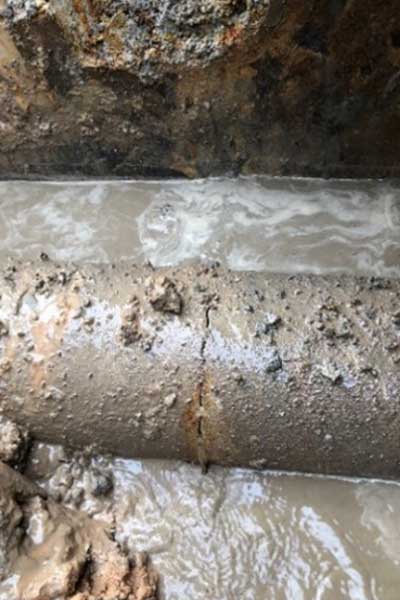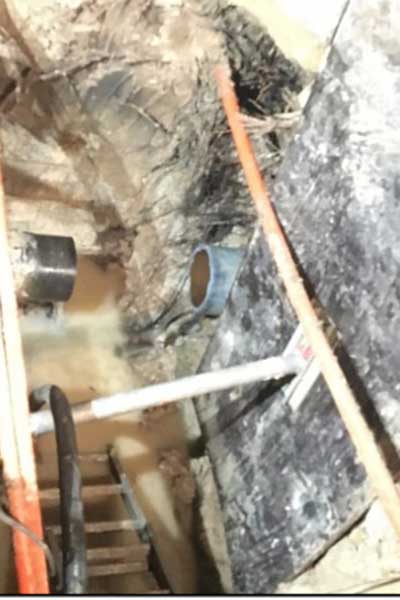In the City of Houston, news reports have highlighted the effects of the dry, drought-like weather on the aging water infrastructure with main line water breaks causing road sink holes and service outages. In MUD 208, although not as dramatic as breaks shown in news reports, we have experienced our share of water line breaks too.


Fortunately, service outages to customers have been minimized due to the quick response by our operator, H2O Consulting, and their willingness to work late into the night to restore service to our customers.
Though the line breaks have been exasperated by the dry weather, line breaks have been occurring more often over the last several years due to an aging water and sewer infrastructure. MUD 208 has had 41 water line breaks since 1999. There were 13 line breaks in the 10 years from 1999 to 2009, 16 for the next 10 years, 2010-2019, but in the last 3½ years, 2020 to 2023, 12 line breaks have already occurred. A very disturbing trend due to an aging system.
The following are some examples of recent line breaks and repairs:
The MUD 208 infrastructure consists of the follow components:
- 12 miles of water distribution lines ranging from 4” to 12” inches in diameter installed in 1986 to 1989
- 13 miles of sanitary sewer lines ranging from 8” to 18” inches in diameter installed in 1986 to 1989
- Water plant with 720,000 gallons of ground storage tank capacity, 2,400 gallons per minute pumping capacity, 2 deep water wells and standby power generator. The water plant was built in 1988
- Lift station for sanitary sewer waste built in 1985
- ~9.17% ownership in 4,600,000-gallon capacity sewage treatment plant built in 1978
- Provides Water and Sewer service to a population of 3,642 people daily through 1,213 connections to the infrastructure.
It can be noted from the above, the majority of the MUD’s infrastructure is approaching 40 years old. As with an aging house or a car, repairs and replacement of items are necessary to keep things running properly. The same is true for the MUD infrastructure – maintenance, rehabilitation and replacement is necessary to keep reliable water and sewer services available to our customers. Some of the recent and ongoing major rehabilitation/replacements include:
- Water Plant ground storage tank rehabilitation in 2018 costing $586,517
- Sanitary Sewer Line Rehabilitation in 2021 costing $205,617
- Sewage Treatment plant bar screen replacement in 2022 costing $222,936
- Lift Station Wet Well Rehabilitation in 2022 costing $244,530
- Water Plant MCC replacement in 2023 – 2024 with an estimated cost of $386,000
The MUD 208 Board of Directors is currently working with its engineers and operators looking at the water distribution system, evaluating past water line breaks commonalities to determine what areas in the distribution system may be more vulnerable to failure and what areas should be considered for proactive replacement to avoid unplanned water disruption to our customers in the future. This type of evaluation is also being done for equipment at the water plant and sewage treatment plant.
As can be seen by the costs above, rehabilitation and replacement of lines and equipment will be expensive. Two methods of funding are available to MUDs. It should be noted that funding for projects must be in the bank prior to bidding a project. The first funding method is authorization and issuance of bonds. Using this method, current and future residents share the debt burden which is spread over 25 to 30 years by incorporating it into the property tax rates. The second method is “Pay As You Go” in which the resident’s water bills are the primary funding source. With this method, water rates would increase in advance to fund each project which means the project debt burden falls on the current residents.
Once work scopes and estimated costs are determined, the Board will work with our financial advisor to determine the best, most cost-effective funding method to have the least impact to our customers.







